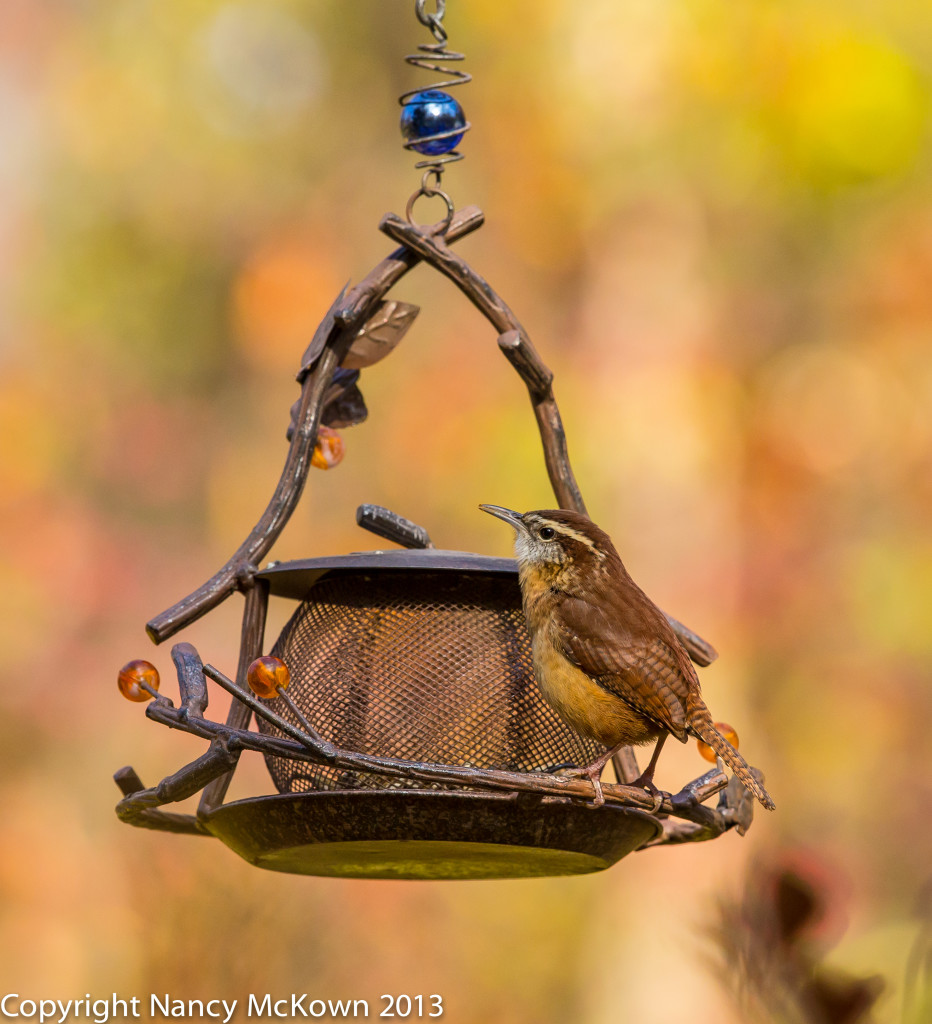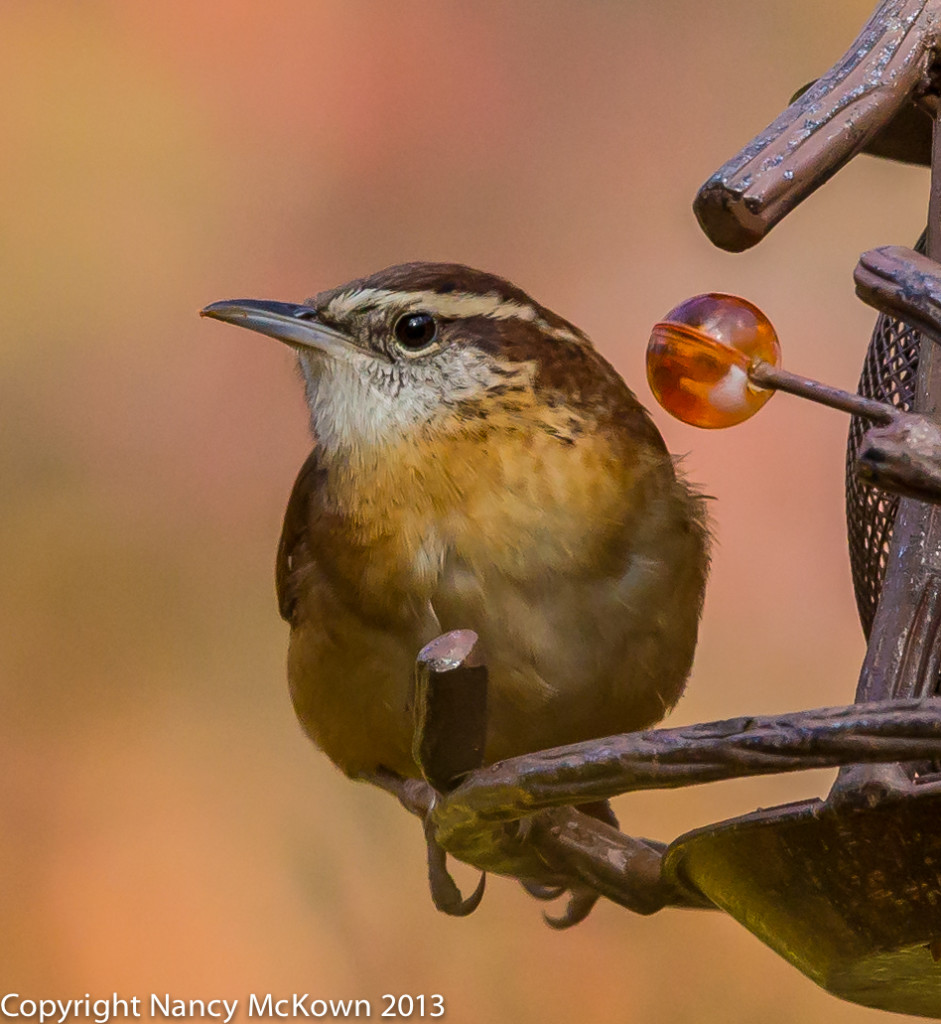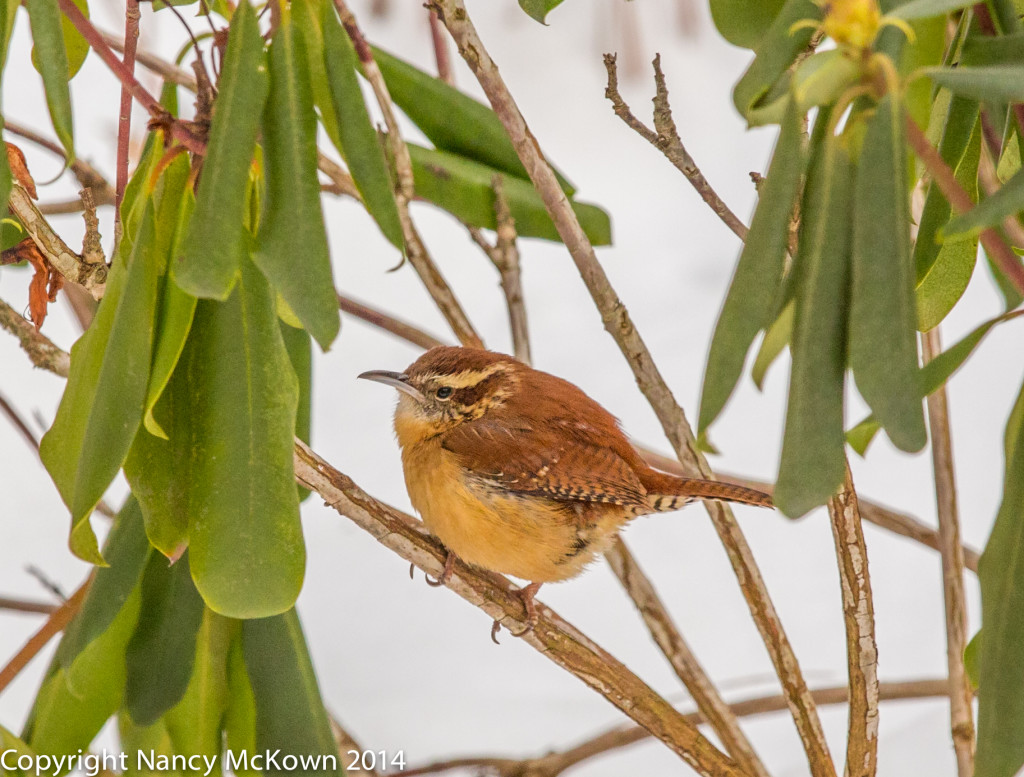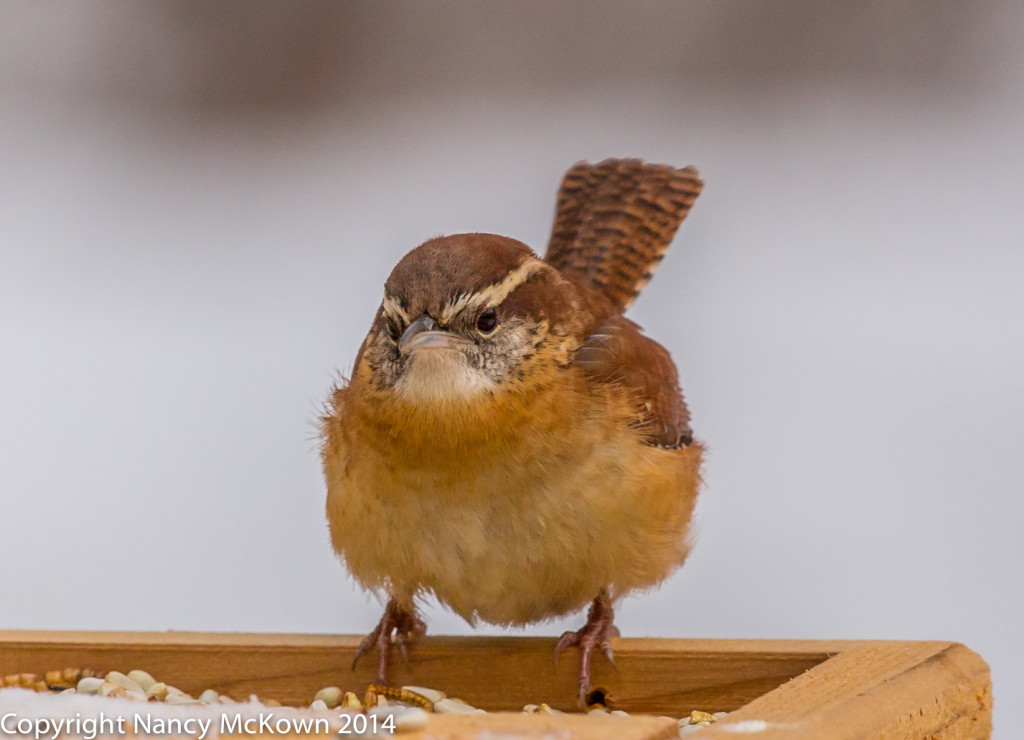An Uncommon Bird At the Feeder – The Carolina Wren
I’ve spent a lot of time close to home lately, photographing birds at my beautiful, new feeder. After several days, I was rewarded with a glimpse of a rather uncommon feeder bird….. the Carolina Wren.
Carolina Wrens have the most intricate and lovely set of bird vocalizations that I’ve ever heard. (Sadly, there’s not much to sing about in the winter, so you will have to wait until Spring to hear them, or visit this link.)
These wrens are large and hardy, as wrens go, and not particularly shy. They are not easily shoved aside by the bigger birds at the feeder. On the coldest Michigan winter nights, we see them nestling under our front porch.
These photographs show a rather small bird photographed at a rather high ISO, with late fall foliage and then winter white in the background. Since noise takes a toll on clarity, and autumn colors fade with the approach of winter, I decided to punch these photos up a little using a couple tools in my upgraded post processing software, Lightroom 5.
Lightroom’s Non Destructive Post Processing
Shooting in RAW gives the photographer an impressive range of resources to make photo improvements during post processing. First of all, Lightroom 5 post processing software keeps your original raw photo data intact. So while you’re editing, you always have the option of going back to the last change or all the way back to square one. It’s also possible to make virtual copies to save all the different changes and enhancements you made while experimenting with Lightroom 5.
Shooting in RAW digital image format is best because it’s the only format where you have non destructive options during post processing. That means you can experiment without a care. My camera is set to RAW format all the time.
Improving the Clarity and Vibrancy of Your Photographs
I regularly use the “clarity” slider and the “vibrancy” slider in Lightroom 5. The “clarity” slider’s purpose is to enhance and brighten the details. so the image appears clearer. The “vibrancy” slider’s purpose is to bring out the dull colors….not all colors, just the dull colors. The results are subtle, but still impressive. Just remember that more is NOT better when using these two sliders, unless you are going for a surreal look.

ISO 1250; f/7.1; 1/1250 Second

ISO 1600; f/7.1; 1/1250 Second
Why I Like these Photos
In an effort to improve my skills, I’ve been trying to evaluate my photographs more for artistic merit. Here are my observations:
- Catchlight in the birds’ eyes is appealing and draws the attention of the viewer. I’ve rejected many wild bird photos because of the subject’s lifeless eyes. It’s not a little thing, especially with regard to dark eyed birds. (If you are photographing a bird with shiny red or yellow eyes, catchlights in the eyes are not as critical.)
- Curved lines make the image look more graceful and help organize and balance it.
- The texture comes through in the foreground… all in focus. There’s very little texture visible in the background- just melt away color. I think this keeps the attention of the viewer on the areas in focus.
- After using Lightroom 5 for a while, I’ve discovered that I like the unearthly and dreamlike qualities that I get by pushing the clarity and vibrancy sliders a little farther. I plan to spend more time playing with these tools.
Winter Bird Feeders
The other feeders in my yard may be devoid of charm, but they stand up better to the harsh Michigan winters. The carolina wrens don’t seem to care that I had to take down and store my newest feeder. Below are more photos of the carolina wren, taken during a brutally cold day in January, 2014.


Selection of Seeds and Dried Mealworms at the Platform Feeder.
ISO 320; f7.1; 1250 Second










I’ve seen a similar look on my kids faces at the dinner table!
Mary